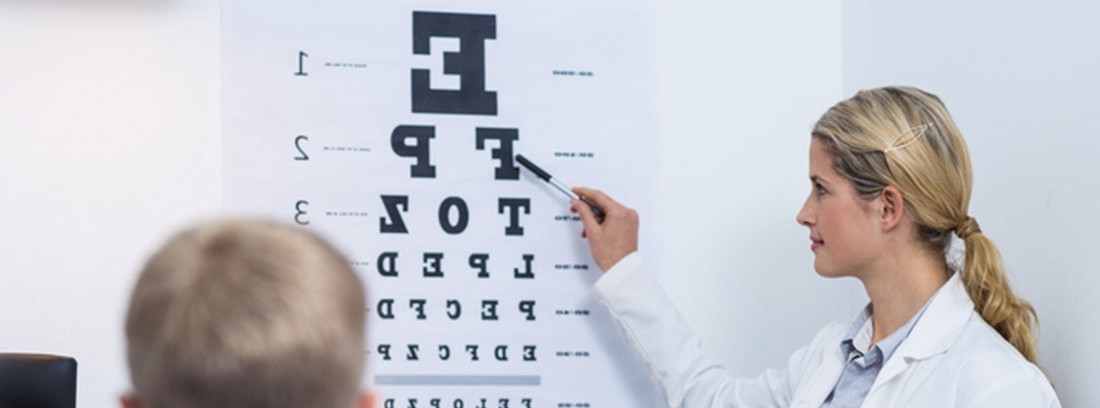Visual acuity

The study of the visual acuity It is performed by the optometrist and is usually carried out in his office. The study must be carried out individually for each eye and later jointly for both eyes. A far vision study and a near vision study should be done.
There are different diagnostic techniques that allow the study of visual acuity, the most commonly used technique for the study of distant visual acuity is the Snellen test, which consists of correctly identifying the letters drawn forming descending rows from larger to smaller on a graph. known as the "Snellen Chart." To do this, the patient sits on an armchair at a distance of about 5-6 meters from the graph, covers one of his eyes and will read the lines of letters that he can identify in a direction from left to right and from top to bottom. Then you must repeat the process with the contralateral eye and finally with both eyes at the same time. The greater the number of lines identified, the greater the visual acuity of the person studied.
The study of near visual acuity is carried out in the same way but using a smaller graph that is located about 30 centimeters from the patient's visual field.
Preparing for the visual acuity test
It does not require prior preparation by the patient.
In the case of wearing lenses or contact lenses, it is advisable to take them to the test, although the optometrist may ask you to remove them for a better measurement.
In the event of detecting a visual acuity defect during the study, the optometrist may request the patient to place corrective lenses that will be exchanged throughout the study until a good visual acuity is achieved with each eye individually and with both eyes together.
The exam usually lasts between 10 and 15 minutes.
What will it feel like during and after the exam?
The visual acuity study is painless.
Eye irritation or visual fatigue may occur during the study that will disappear once the study is finished.
Study risks
This study does not carry any risk for the patient
Study contraindications
This study has no contraindications
What is the visual acuity test done for?
The study of the visual acuity It is a simple and safe technique that allows diagnosing possible visual defects known as refractive errors such as: myopia, hyperopia, astigmatism, among others, most of which should be treated later by using corrective lenses or specific treatments.
This technique allows, in turn, to detect visual defects caused by other ocular pathologies such as cataracts, diseases of the retina or the optic nerve, which must later be studied with more specific techniques.
Family and Community Medicine Specialist
(Updated at Apr 13 / 2024)